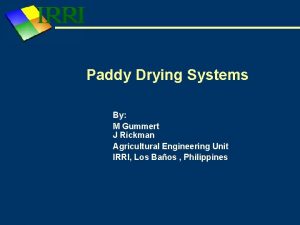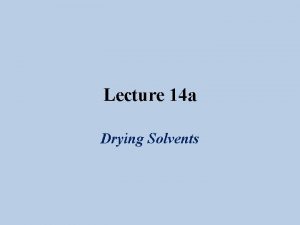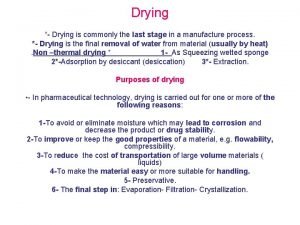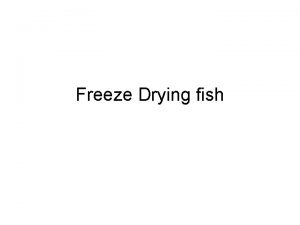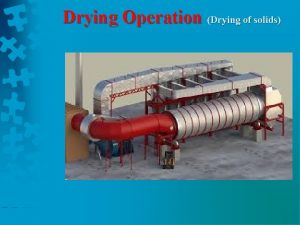Freeze Drying fish Introduction In freeze drying foods








- Slides: 8

Freeze Drying fish

Introduction • In freeze drying, foods are dried in two stages, first by sublimation to approximately 15% moisture content (on wet weight basis) and then by evaporative drying of unfrozen water to 2% of moisture content. The rate of drying depends mostly on the resistance of the food to heat transfer and on the resistance to vapour flow.

Principle of the equipment Equipment Freeze drier consists of a vacuum chamber containing trays to hold food during drying, source of heat to supply latent heat of sublimation, refrigeration coils to condense vapour with automatic devices to keep maximum area of the coil free of ice for vapour condensations and vaccum pump to remove non expensible vapour.

Types of equipments • Accelerated freeze driers • Radiation freeze driers • Microwave and dielectric freeze driers

Freeze drying process • Freezing • Primary drying to remove water ice. • Secondary drying to remove bound water molecules from the primarily dried materials.

Primary drying During drying, an interface is set up which comes from the exposed surface to vacuum system to the surface where heat source is in contact or moves deeper in radiant heat.

Secondary Drying • The locked in or bound water is removed form the products by supplying additional heat energy to the system.

Effect of freeze drying on food Freeze dried foods have high retention of sensory and nutritional qualities and shelf life of more than 12 months when correctly packed. Allows rapid and full rehydration but the product is fragile and require protection from mechanical pressure. The open porous structure of the food may allow oxygen to enter and cause oxidative changes. Therefore vacuum or inert gas packaging is required.

